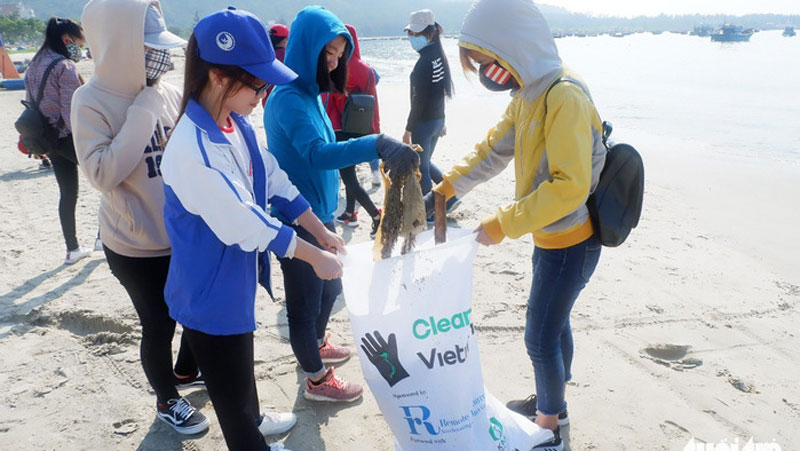



Hundreds of young people clean up Son Tra Beach in Da Nang city.
The campaign was jointly launched by the organisation "Vietnam Clean and Green” and HCM City’s Youth Federation.
A survey conducted by the HCM City Department of Natural Resources and Environment found that the volume of plastic trash in the city is just behind food waste, with an estimated 250,000 tonnes of plastic waste discarded each year.
According to HCM City’s waste recycling fund, if 48,000 tonnes of plastic waste, which are buried in the southern metropolis each year, are recycled, the city can save about VND15 billion (roughly US$660,000) annually.
The same day, more than 500 representatives from businesses, organisations, clubs and volunteer groups and locals in the central city of Da Nang also joined hands to clean up beaches, classify rubbish and organise a range of activities aiming to raise public awareness of plastic pollution as well as environmental protection.
Earth Day 2018 was also observed in other localities across the country, including the capital city of Hanoi, the central province of Thua Thien-Hue and the island district of Phu Quoc in the Mekong Delta province of Kien Giang, drawing the participation of more than 4,000 volunteers.
According to earthday.org, 8.3 billion metric tonnes of plastic has been produced since plastic was introduced in the 1950s. The amount of plastic produced in a year is roughly the same as the entire weight of humanity. Up to 91% of plastic waste isn’t recycled. And since most plastics don’t biodegrade in any meaningful sense, all that plastic waste could exist for hundreds or even thousands of years.
Of note, eight million metric tonnes of plastic winds up in the oceans each year. That’s enough trash to cover every foot of coastline around the world with five full trash bags of plastic compounding every year.